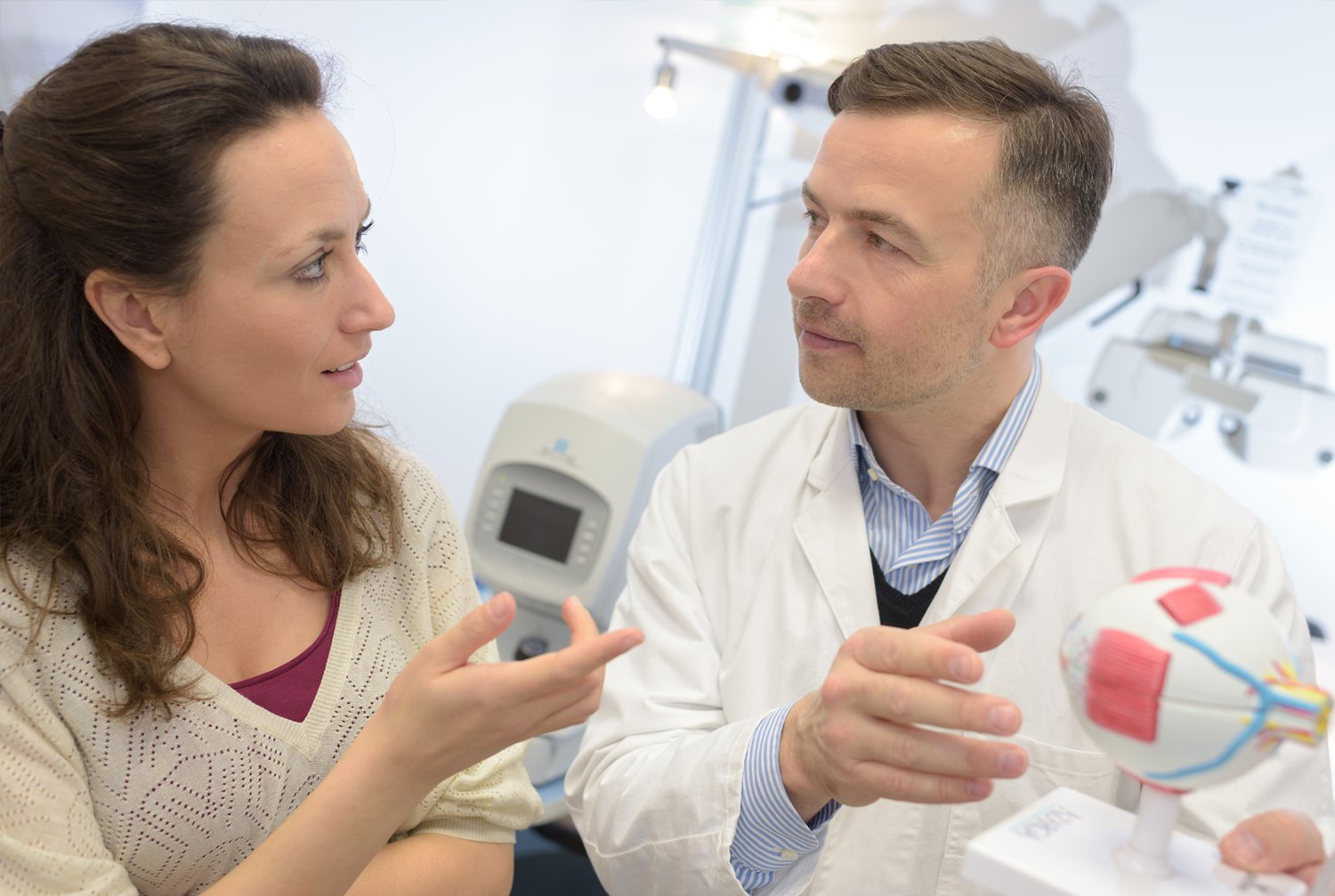Your daily performance is depending on good vision. You can do a lot to maintain and help yourself to a good vision. A healthy lifestyle with good nutrition and exercise to keep your blood pressure down is perfect for your eyes. You should also protect your eyes from stress and mechanical damage.
Sometimes diseases can hit anyways. These are a few of the most common eye diseases to look out for:
- Age-related macular degeneration (AMD)
Macular degeneration happens when the part of the eye responsible for central vision – what you see when you look straight ahead – is unable to function as well as it used to. The centre of the image appears blurred while the peripheral vision remains intact. The condition is most common in people over the age of 50. - Conjunctivitis
If you have red, itchy eyes, sometimes accompanied by a sticky coating on the eyelashes, you may have conjunctivitis. It usually clears itself up within a couple of weeks. If it persists, seek medical advice. - Glaucoma
This eye disease develops when the fluid in the eyeball cannot drain properly and pressure builds up. The pressure can damage the optic nerve which connects your eye to your brain, and the nerve fibres from the retina which is the light-sensitive nerve tissue at the back of your eye. This can cause permanent vision loss. Risk factors for glaucoma include a family history of the condition, migraines, high blood pressure and obesity. If treated early, it is possible to slow or stop the progression of the disease with medication, laser treatment or surgery. - Keratoconus
This is a progressive eye disease in which the normally round cornea begins to weaken and becomes more cone-shaped. This cone shape deflects light as it enters the eye, causing increasing nearsightedness and problems with distorted and blurred vision. Keratoconus can occur in one or both eyes and often begins during a person’s teens or early 20s. There are several causes of keratoconus, including genetic predisposition and overexposure to ultraviolet rays.
If you experience any of the symptoms described above, you should contact your optician as soon as possible. In some cases, like with glaucoma, it is an advantage with early detection. Make it a habit to visit your optician regularly to have your eyes examined. Detecting and treating eye diseases early can help maintain good vision for the rest of your life.
.jpg?width=80&name=N.Vlasak%20(002).jpg)


.jpg?width=200&name=N.Vlasak%20(002).jpg)